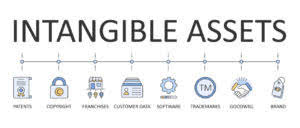
Transferring multiple balances is possible if you stay under your balance transfer limit. You can usually transfer up to 90% of your credit limit (which is based on your income, credit score, current debt, and other factors). You’ll receive the first advance payment within hours or a business day or two, depending on the factoring company. After your customers pay their invoice to the factoring company — however long that takes — you’ll receive your second and final payment. You may receive this payment immediately or as a part of a batch payment, depending on the factor’s policies.
- Applying for a new card triggers a hard inquiry, which can ding your credit score temporarily.
- However, some of the requirements that you’ll need to meet for invoice financing will vary based on the individual lender or company.
- Therefore you need to be careful to understand what all of the costs, fees and charges that you may be facing.
- By plugging in different term lengths and interest rates, you’ll see how your monthly payment could change.
- Learn how trade credit insurance empowers Stena Metal, a Swedish metal recycling company, to run a sustainable business in a high-risk industry.
Why is invoice factoring risky?
When clients pay their invoices, the business repays the lender, minus a fee or interest. In invoice financing, the financial company basically acts as a lender, advancing money to a business while treating the unpaid invoice as collateral. In invoice factoring, the financial company actually buys the invoice and assumes responsibility for collecting on it.

Halal Investments for Singapore Muslims? It’s time for a shake-up in the Islamic Investments scene.
However, this amount varies based on your industry, client concentration, and A/R credit quality. The final structure is flexible and based on what works best for you and the factor. It allows for rapid cash flow — rather than waiting for your client to pay you, you can be paid as soon as you send your invoice (usually within one or two days). You can get up to 95% of the invoice amount in advance, with the remainder paid (less interest and fees) when the consumer pays. Invoice financing gives you quick cash for your unpaid invoices but comes with drawbacks. Invoice factoring and invoice financing are often used interchangeably; however, there are differences between these two types of funding.
- Invoice finance providers also generally like to see that your business has an established trading history.
- Typically, you’ll be charged a processing fee (about 3%), as well as a factor fee.
- Continue making minimum payments on your existing accounts until you confirm the transfer is complete to avoid surprise interest charges or fees.
- Invoice financing is usually a better option for businesses that want to maintain control over invoices and deal with their customers directly.
- It can also be helpful for businesses that can’t wait weeks or months to get approved and funded for an SBA loan or a traditional small business loan.
Ineligible Invoices for Invoice Financing
When you submit an invoice for factoring, the factoring company won’t pay you the full amount of the invoice at once. Instead, you’ll receive two separate payments, starting with the upfront payment based on your advance rate and a follow-up payment later after your client pays the invoice factoring company. Instead of focusing on your credit score and other financials, invoice financing companies are more interested in your invoices and customers’ creditworthiness. This makes it easier for companies with bad credit or insufficient business history to qualify.

Traditional banks, credit unions, and online lenders like Upgrade and Upstart offer personal loans. However, be aware that interest rates can be high, depending on your credit score invoice financing and other factors. Building your credit score can help you qualify for the best personal loan rates. Otherwise, request one via the new card issuer’s online portal or by phone.
Invoice financing vs. “traditional” lending options

Invoice finance allows businesses to borrow money against what is owed to them by their customers from a third-party lender, who will either charge a fee or take a percentage of the amount owing. It’s a type of short-term borrowing that helps a corporation increase its immediate working capital, which can subsequently be utilised to cover business expenses. A business will pay an invoice finance provider a fee in exchange for quick capital. This can be a flat cost or a percentage of the amount they’ve borrowed. “Established companies with large, creditworthy customers can often obtain invoice financing from banks at fairly low rates,” Johnston says.
Should You Lock In a Mortgage Rate Now?
Progress Billing happens when a big project cannot be completed unless a portion of the project has been paid. However, financing companies may not accept these invoices as they typically require invoices to be contingent-free. Your customers will directly pay their invoices to the lender you’re working with. This will provide you with short-term liquidity, which is particularly useful for financing slow-paying accounts receivable. Factoring without recourse often has higher charges because the risk to the lender is greater. “As interest rates have risen throughout the year, invoice financing is becoming more expensive for all businesses,” Johnston says.
- Read on to see how invoice financing works and whether it is a good idea for businesses that need funds.
- The structure of merchant cash advances can be more complex than invoice financing, and often more expensive.
- As you can see, this strategy allows you to improve cash flow without requiring customers to make full payments at the time of purchasing your products or services.
- Small businesses, in particular, may have limited funds available, meaning that money tied up in unpaid invoices can have a major impact on cash flow.
- Utilising invoice financing tends to be easier to qualify for than most business loans that are normally available.
- Many credit cards offer promotional interest rates as low as 0% on balance transfers, which can help you pay down your debt without racking up more interest.
